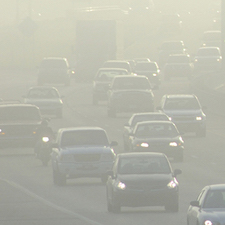 A new study by researchers at the University of Minnesota and the University of Washington finds a significant racial disparity in exposure to nitrogen dioxide (NO2), a major air pollutant. Most of the exposure to NO2 results from motor vehicle exhaust and power plant emissions. High levels of NO2 exposure have been shown to contribute to a large number of health problems.
A new study by researchers at the University of Minnesota and the University of Washington finds a significant racial disparity in exposure to nitrogen dioxide (NO2), a major air pollutant. Most of the exposure to NO2 results from motor vehicle exhaust and power plant emissions. High levels of NO2 exposure have been shown to contribute to a large number of health problems.
The U.S. Environmental Protection Agency reports that NO2 levels have dropped by 56 percent since 1990. But in 2010, African Americans and Hispanics in the United States had 37 percent higher levels of exposure than White Americans. This was down only slightly from 2000. In 2010 concentrations of NO2 in neighborhoods with the smallest percentages of Whites was 2.7 times higher than in the neighborhoods with the highest percentages of Whites.
The study concludes that if people of color breathed the same air as White people with similar levels of NO2, about 5,000 premature deaths from heart disease would be avoided annually.
Lara P. Clark, a doctoral student in civil and environmental engineering at the University of Washington and the lead author of the study, notes that “everyone benefited from clean air regulations and less pollution; that the good news. But the fact that there is a pervasive gap in exposure to NO2 by race – and that the relative gap was more or less preserved over a decade – is the bad news.”
The study, “Changes in Transportation-Related Air Pollution Exposures by Race-Ethnicity and Socioeconomic Status: Outdoor Nitrogen Dioxide in the United States in 2000 and 2010,” was published on the website of the journal Environmental Health Perspectives. It is available here.











